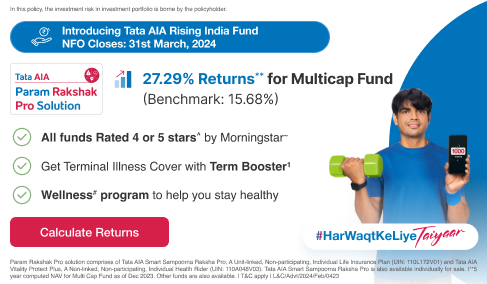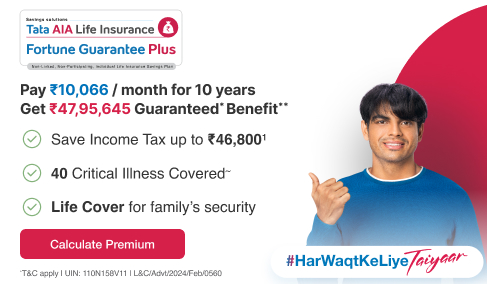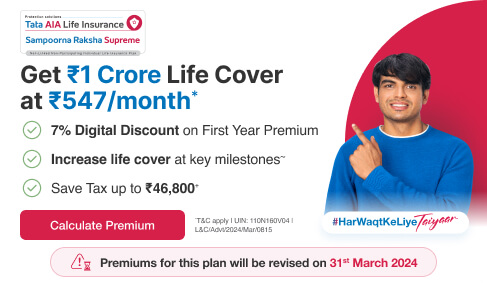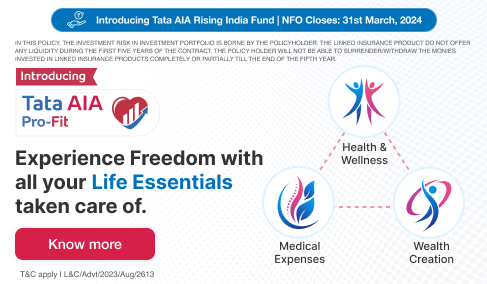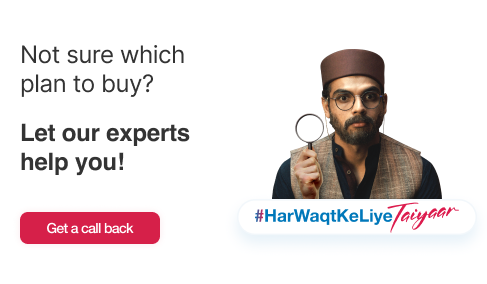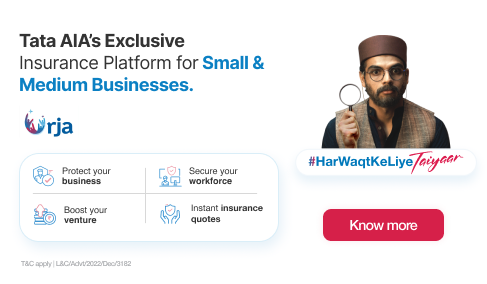Albert Einstein famously stated, "The hardest thing in the world to understand is the income tax." Fortunately, tax-savings4 need not be that hard with several investment avenues offering tax4 relief. But it is best to look for the best tax-saving4 instruments at the start of the financial year. Then you can begin tax4 planning early. It will help you maximise on available deductions, reduce your tax4 outgo, and align your investments with your savings goals.
Here's a guideline on the best tax-savings4 instruments.
Which are the best tax-free4 investments under Section 80C of the Income Tax Act, 1961?
With 80C contributions, you can claim up to ₹1.5 Lakh as tax4 benefits against:
- School Tuition fees
- Home loan Principal repayment
- Public Provident Fund (PPF)
- National Savings Certificate (NSC)
- National Pension Scheme (NPS)
- Employee's Provident Fund (EPF)
- Mutual funds in Equity-linked Savings Scheme (ELSS)
- Senior Citizens' Saving Scheme (SCSS)
- Five-year fixed deposits with banks and post offices (FD)
What is the maximum tax4 you can save?
The following calculations can help in your tax4 planning:
- Check tax-saving4 expenses and investments you already have, such as the total insurance premium or EPF contribution.
- Subtract this sum from ₹1,50,000 to deduce how much more you must vest.
- Put the balance amount in the tax-saving4 tool you prefer to exhaust the 80C limit.
However, when you analyse the various tax-saving4 instruments, consider factors such as
- Costs
- Your risk tolerance
- Your liquidity needs
- Lock-in periods
- Ease of investment
- Post-tax4 returns
With the launch of the e-KYC facility, investments in many such schemes have become paperless and less time-consuming. But some investment options are not open to all investors.
- The Sukanya Samriddhi Yojana is only available for girls below the age of 10.
- Only investors above the age of 60 (or 58, in some cases) can use the SCSS.
- The NPS applies only to taxpayers below 60 years of age and EPF, only to salaried individuals.
- ELSS exposes you to market volatilities and may not be viable if you prefer low-risk investments or are nearing retirement.
Also, hassles with the other instruments are as follows:
- Capital gains from ELSS are taxable4 if the profits exceed ₹1 Lakh during the financial year.
- Interests on NSC, SCSS, and FDs are taxable4, making the returns cost-intensive.
- Post-tax4 gains from five-year term deposits are less than 5% in the 30% tax4 margin, which, considering inflation cannot help in wealth creation.
Hence, if you are seeking solutions for how to save income tax4 on salary or business income, consider tax-savers4 with Exempt- status. These instruments, such as PPF and life insurance savings plans, help in tax4 savings as well as earning returns. The amount you invest qualifies for deductions, and the returns are also tax-exempt4.
Why buy life insurance savings plans?

- Tax-savings4: Whether the policy covers yourself or your dependent spouse or children, you can claim deductions for the premiums paid. The money received is also tax-free4 under Section 10(10D).
- Assured Returns: Life insurance savings plans present assured returns, regardless of market conditions. Insurers often declare bonuses3 or provide guaranteed1 additions to your capital, helping you build wealth. You can use the maturity benefit to fund your real estate purchases, children's higher education, securing retirement funds, and other long-term life goals.
- Liquidity: You can avail of loans against your policy, getting quick access to funds in financial emergencies.
- Financial security: Life insurance shields your loved ones against possible economic challenges in case of an eventuality. Thus, these financial tools are invaluable, both as a tax-saving4 tool and a safety-net for your family's future financial wellbeing.
Tata AIA offers several lucrative Savings Solutions. The savings plans from Tata AIA include:
- Tata AIA Life Insurance Guaranteed Return Insurance Plan (UIN:110N152V07)
- Tata AIA Life Insurance Gold Income Plan (UIN: 110N131V02)
- Tata AIA Life Insurance Smart Income Plus (UIN: 110N126V04)
- Tata AIA Life Insurance Guaranteed Monthly Income Plan (UIN:110N147V02)
- Tata AIA Life Insurance Diamond Savings Plan (UIN:110N133V02)
- Tata AIA Life Insurance Fortune Guarantee (UIN: 110N120V08)
- Tata AIA Life Insurance Money Back Plus (UIN: 110N119V02)
- Tata AIA Life Insurance MahaLife Gold (UIN: 110N029V03)
- Tata AIA Life Insurance Value Income Plan (UIN: 110N153V01)
Tax4-saving instruments other than 80C
Section 80C's pooled deductions from all the applicable instruments may not be enough if you belong to the higher-income category. In such a case, you need to look at tax-saving4 benefits beyond the 80C limit.
1. Section 80CCD (1B)
Under section 80CCD (1B) Additional Investments of ₹50,000 in NPS over and above the ₹1,50,000 under Section 80C are tax-deductible4.
2. Section 80D
Health insurance premium paid |
Maximum deductions you can claim |
For yourself, spouse, or dependent children |
₹25,000 |
Yourself and dependent family (if you are over 60 years of age) |
₹50,000 |
For parents (below age 60) |
₹25,000 extra |
Senior citizen parents |
₹50,000 extra |
Thus, if you are a senior citizen and your parents are octogenarians, you can claim up to Rs. 1 Lakh deduction4 from your taxable income. You can include preventive health-checkup costs up to Rs. 5,000 under these limits.
3. Section 24(b)
Deductions for interests payable on home loans - up to ₹2,00,000
4. Section 80EE
Deductions on home loan interest for first-time homeowners – up to ₹50,000 (over and above the Section 24 limit)
5. Section 80GG
Even if you do not receive HRA tax exemption from your employer, house rents you pay for your residence are tax-deductible4 subject to maximum deduction of Rs. 60000.
To conclude
"A penny saved is a penny earned," goes the well-known proverb. However, tax-savings4 should not be the sole objective behind your investments. Plan your finances as per your risk profile and life goals. Take advantage of low-risk, tax-exempt4 returns from life insurance savings plans and save tax4 while creating wealth for your future.
L&C/Advt/2021/May/0635


 FOR EXISTING POLICY
FOR EXISTING POLICY
 FOR NEW POLICY
FOR NEW POLICY

